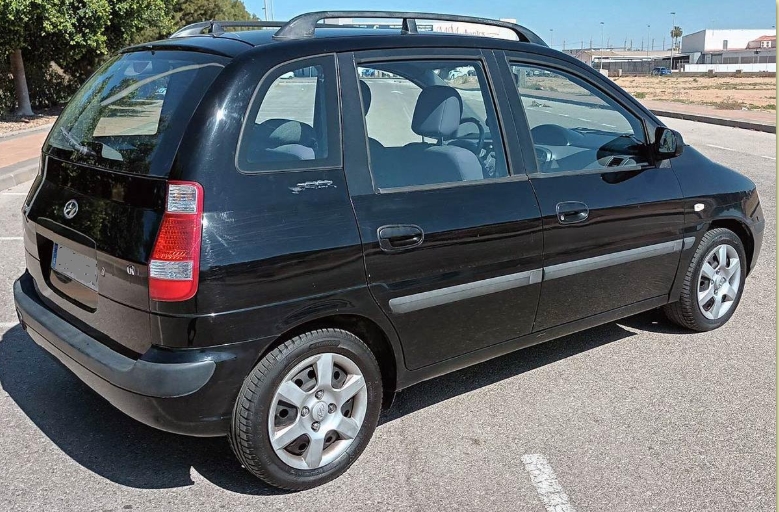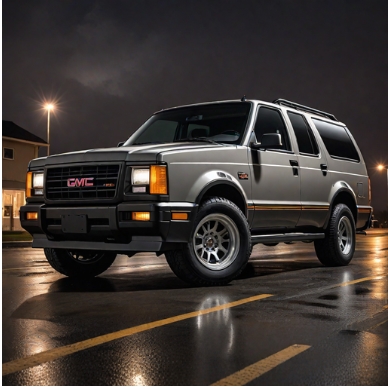More Than a Box on Wheels: The Complete History of the Hyundai Matrix
In the annals of automotive history, certain cars become icons of performance, luxury, or design. Others, however, earn their place through sheer, unadulterated practicality. The Hyundai Matrix belongs firmly in the latter category. It was never the fastest, the most luxurious, or the most beautiful car on the road, but for a decade, it was a paragon of clever packaging, value for money, and surprising character. It represented a crucial step in Hyundai’s journey from a budget brand to a global powerhouse, proving the company could compete in one of Europe’s most demanding segments. This is the evolution of the Hyundai Matrix, an unsung hero of the compact MPV world.
The Genesis: A Brave Foray into a Crowded Market (Pre-2001)
The late 1990s witnessed a seismic shift in the European family car market. The traditional sedan and hatchback were being challenged by a new breed of vehicle: the compact Multi-Purpose Vehicle (MPV). Spearheaded by the revolutionary Renault Mégane Scénic, these cars offered the footprint of a family hatchback but with a taller body, higher seating position, and a brilliantly versatile interior. They were an instant hit, and every major manufacturer scrambled to develop a competitor.
Hyundai, then known primarily for producing affordable and reliable, if somewhat uninspired, cars, saw a golden opportunity. A successful entry into this segment would not only boost sales but also significantly enhance its brand image in the critical European market. However, to stand out against established giants like Renault, Opel/Vauxhall, and Citroën, Hyundai knew it needed something special. It couldn’t just be practical; it needed a design pedigree.
In a move that surprised the industry, Hyundai commissioned the legendary Italian design house Pininfarina to pen the exterior of their new MPV. This was a masterstroke. Pininfarina, the firm behind countless Ferrari, Maserati, and Alfa Romeo icons, brought an immediate sense of prestige and style. The project was based on the robust platform of the (XD) Hyundai Elantra, ensuring a solid mechanical foundation, while Pininfarina was given the task of creating a distinctive and functional body to sit atop it. The result, codenamed FC (Family Concept), was about to make its debut.
.
THIS could come in handy for your auto garage (and everywhere else!):

.
The Original Icon: The First Generation (2001–2005)
The Hyundai Matrix was officially launched at the Auto Mobil International Leipzig in April 2001, with sales across Europe and Asia beginning shortly after. In its home market of South Korea, it was named the Hyundai Lavita, which translates to “life.” In Australia, it was marketed as the Hyundai Elantra LaVita, directly linking it to its platform sibling. But in its primary European market, it was simply the Matrix.
Pininfarina’s design was immediately its most talked-about feature. While its overall “one-box” silhouette was typical of the segment, its defining characteristic was the unique, stepped beltline. The window line on the rear doors sharply angled downwards before rising again at the C-pillar. This asymmetrical design element was a bold and unconventional choice that gave the Matrix an unmistakable profile, setting it apart from its more conservative rivals. It was a design that people either loved or hated, but it was certainly not anonymous.
Inside, the Matrix was a masterclass in space efficiency. Despite its compact dimensions (just over 4 metres long), the interior felt remarkably airy and spacious, thanks to the tall roofline and large glasshouse. The dashboard featured a centrally mounted instrument cluster, a popular trend at the time, which was intended to be easily readable by both driver and passenger while making the cabin feel wider. The true genius, however, lay in its seating flexibility. The rear bench could slide forwards and backwards to prioritise either legroom or boot space and featured a 60/40 split-fold. The backrests could also recline for passenger comfort, and with the seats folded down, the Matrix offered a cavernous, van-like loading area.
During its initial production run, the Matrix was offered with a straightforward range of powertrains:
- Petrol Engines:
- 1.6-litre “Alpha II” DOHC 16-valve inline-four, producing 102 horsepower (76 kW).
- 1.8-litre “Beta II” DOHC 16-valve inline-four, producing 121 horsepower (90 kW).
- Diesel Engine:
- 1.5-litre CRDi three-cylinder turbo-diesel, sourced from Italian engine specialist VM Motori. This unit produced 81 horsepower (60 kW) and was noted for its fuel efficiency, though its three-cylinder layout meant it was less refined than four-cylinder rivals.
Trim Levels (2001-2005): Trim levels varied by market, but a common hierarchy in key European markets like the UK was:
- GSi: This was the entry-level to mid-range model. It typically included essentials like power steering, central locking, electric front windows, and twin airbags. Air conditioning and ABS were often optional extras.
- CDX: The top-tier trim level. The CDX added features such as air conditioning, anti-lock brakes (ABS), alloy wheels, electric rear windows, front fog lights, and often a leather-trimmed steering wheel and gear knob.
Refinement and Evolution: The First Facelift (2005–2008)
By 2005, the compact MPV segment had become even more competitive. To keep the Matrix fresh, Hyundai introduced its first facelift. The changes were subtle, intended to modernize the car’s appearance without altering its fundamental character.
Externally, the 2005 facelift was most easily identified by its new grille, which replaced the simple horizontal slat design with a more refined mesh or single-bar style, depending on the trim. The headlights and taillights were also revised with clear indicator lenses, and new wheel cover and alloy wheel designs were introduced.
The most significant upgrade, however, was under the bonnet. The ageing, noisy, and somewhat underpowered three-cylinder VM Motori diesel was retired. In its place came Hyundai’s own, far superior 1.5-litre “U-Line” CRDi VGT four-cylinder turbo-diesel. This was a huge leap forward. It was smoother, quieter, and more powerful, initially producing 101 horsepower (75 kW) and later upgraded to 108 horsepower (81 kW) with a variable-geometry turbocharger. This new diesel engine transformed the Matrix, making it a much more competitive and refined long-distance cruiser, and it quickly became the most popular engine choice in diesel-centric European markets. The 1.6-litre and 1.8-litre petrol engines were largely carried over with minor tweaks for emissions compliance.
Trim Levels (2005-2008): The trim structure was also revised, with Hyundai often using new names to signal the update. Common designations included:
- Classic: This often replaced GSi as the entry-level model. Standard equipment was improved over the years, with features like air conditioning becoming more common.
- Comfort: A mid-spec model that built upon the Classic, typically adding alloy wheels and other convenience features.
- Style: In some markets, this sat at or near the top of the range, equivalent to the old CDX, boasting the highest level of standard equipment.
A Final Flourish: The Second Facelift (2008–2010)
For the 2008 model year, the Matrix received its second and most significant facelift. This update was designed to bring the car’s styling in line with Hyundai’s new, more dynamic design language, epitomized by the recently launched i30 hatchback.
The result was a dramatically different front end. The quirky, clean face of the original was gone, replaced by a much more aggressive and contemporary look. It featured large, swept-back headlights, a new bumper with a prominent lower air intake, and Hyundai’s new corporate grille. While this facelift successfully modernised the Matrix, it also arguably erased its most unique design element—the charmingly distinct Pininfarina face. The famous stepped window line remained, but the car now looked much more like a member of the Hyundai family and less like a quirky Italian-Korean collaboration. The rear received only minor changes, with subtly restyled light clusters.
Inside, the updates were minimal, limited to new upholstery options and revised instrument cluster lighting. The versatile seating and practical layout, the car’s core strengths, were left untouched.
The engine lineup from the first facelift was largely carried over. The excellent 1.5-litre CRDi diesel continued to be the star performer, while the 1.6-litre petrol remained the primary gasoline option in most markets (the 1.8-litre had been phased out in many regions by this point).
Trim Levels (2008-2010): As the model approached the end of its life, the trim range was often simplified. The most common offerings were:
- Comfort: A well-equipped base model that now included most of the features a family would need, such as air conditioning, multiple airbags, and a CD player.
- Style: The higher-specification model, adding larger alloy wheels, climate control in some markets, and other cosmetic enhancements.
End of an Era: Discontinuation and Legacy
Production of the Hyundai Matrix ceased in 2010. Over its nine-year lifespan, it had been a quiet but consistent success for Hyundai. It sold steadily across Europe and Asia, building a reputation for reliability, low running costs, and unparalleled interior space for its size. It was a car bought with the head, not the heart, but it served its owners with unwavering dependability.
The Matrix played a pivotal role in changing public perception of the Hyundai brand. It proved that Hyundai could build a clever, competitive, and characterful car for the demanding European family segment. It was a bridge between the brand’s budget-focused past and its ambitious, design-led future.
Its direct successor was the Hyundai ix20, launched in 2010. The ix20 continued the Matrix’s mission of offering maximum interior space in a compact footprint but did so with a far more conventional and stylish design, reflecting the market’s move away from the quirky, utility-focused look of the early-2000s MPVs.
Today, the Hyundai Matrix is an increasingly rare sight on the roads. It is not a collector’s item, nor is it remembered for its performance. But its legacy endures. It stands as a testament to a time when practicality was king, and to a clever collaboration that gave a humble Korean family car a touch of Italian flair and an identity all its own.







